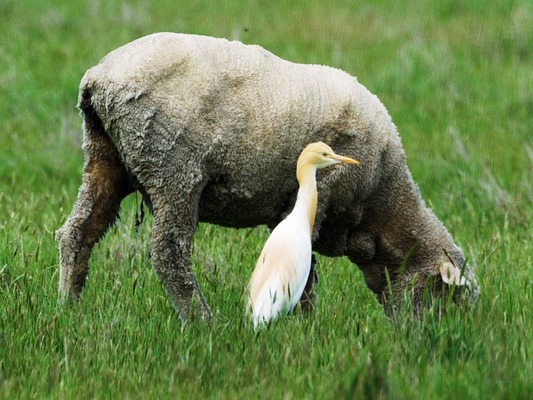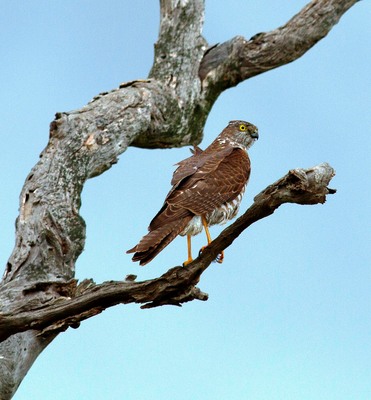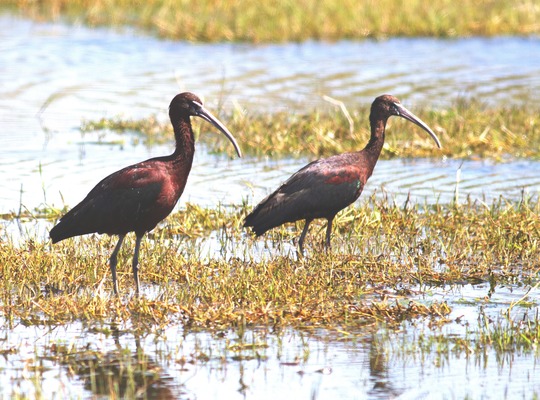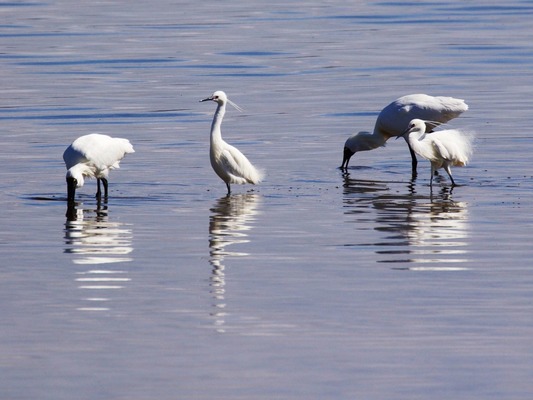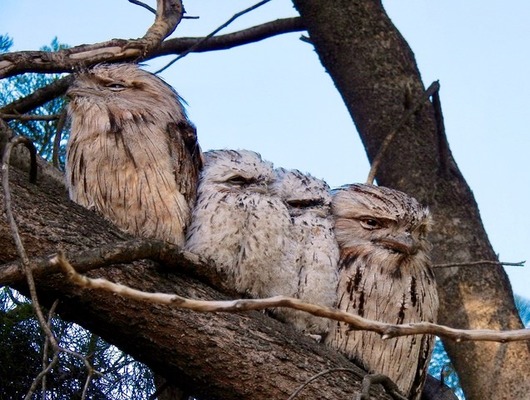I’ve had an odd few weeks, with my oldest daughter having to go to hospital, and I’ve been up an down to Melbourne in between night shifts.
The advantage of going to Melbourne is that Western Treatment Plant (WTP) is on the way home, and I did take advantage of that and drop in one day on the drive home.
I was fortunate to drive to the T-section Lagoons at WTP, and I couldn’t believe my eyes when I saw eight glossy ibis near the Crake Pond. I thought for a moment that I was back at Fogg Dam in the Northern Territory.
The glossy ibis looks black from a distance, but is actually is reddish-brown, with glossy, bottle-green wings. The curved bill is olive coloured, and the eyes, legs and feet are brown. Glossy ibis are much more commonly seen in the northern parts of Australia, and are listed as ‘vulnerable’ in Victoria, so it was great to see eight of them.
I also spotted a juvenile collared sparrowhawk (CSH) at Connewarre. It was perched in a dead tree, and a few galahs were in the same tree trying to appear cool, calm and collected but obviously keeping a close eye on the sparrowhawk. I could tell it was CSH, rather than a brown goshawk because of the square-shaped tail feathers, long, thin legs, and wide eyed stare rather than a beetle-brow stare that characterises the brown goshawk.
Birdlife Australia asked for volunteers a few months ago to survey birds on farms and I thought that would be a lovely thing to do even though I really have more than enough on my plate as it is.
However I went to a farm in Wallington last week with Chris from Birdlife Australia, and it was just wonderful! The farm had a wetland habitat where there were black-winged stilts, whiskered terns, sharp-tailed sandpipers, swans and little grassbirds.
There was a very vocal sacred kingfisher calling, but unfortunately I didn’t spot it. The day was just glorious. I learned two things when conducting the survey – namely that if I had a farm I wouldn’t get much work done as bird watching would be very time consuming, and also it’s very hard to take photos when conducting a survey as you miss most of what is going on when you concentrate on one bird.
I received an email from Carole, who has been in northwestern Victoria with the Bellarine Birdlife Group. She sent me an image of a tawny frogmouth family, and it is a most wonderful photograph.
Kevin sent me an image taken in Queenscliff of two royal spoonbills and two little egrets feeding in Swan Bay. What a beautiful sight. Kevin also sent me a photo of a cattle egret in breeding plumage, hanging around a sheep. In the breeding season the normally white cattle egrets develop an orange crown, neck and breast.
I also received a phone call from Christine who lives in old Ocean Grove, who has a pair of sulphur-crested cockatoos nesting in the yellow gum tree in her garden. I look forward to seeing their offspring one day. Thanks so much for the photos and calls. They are much appreciated.

